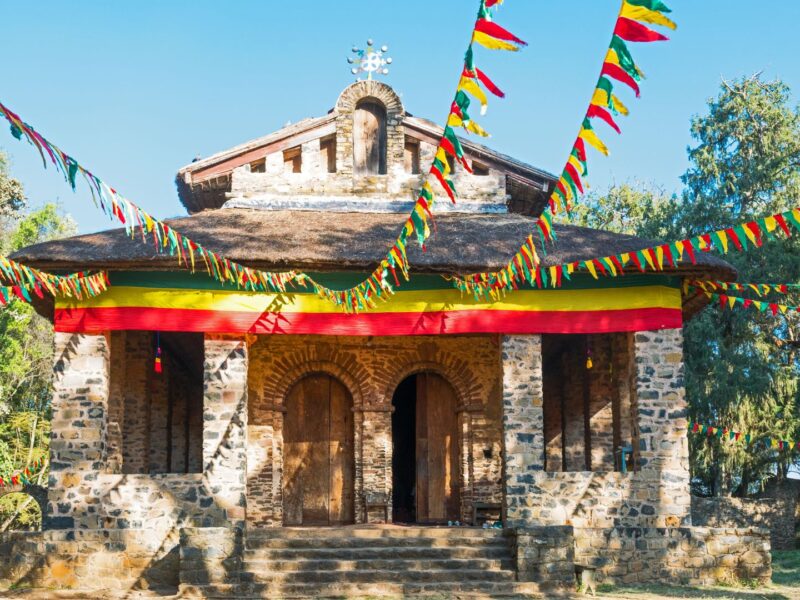Ethiopia, a land of rich cultural heritage and intriguing history, boasts an array of historical landmarks that span a millennia. As the cradle of humanity, Ethiopia’s diverse and ancient roots are evident in its architectural wonders, which offer a unique glimpse into the nation’s past. From ancient rock-hewn churches to majestic castles and fortified city walls, these architectural marvels in Ethiopia are as captivating as they are awe-inspiring. Embark on a journey through time, and uncover the top historical landmarks in Ethiopia.
Lalibela
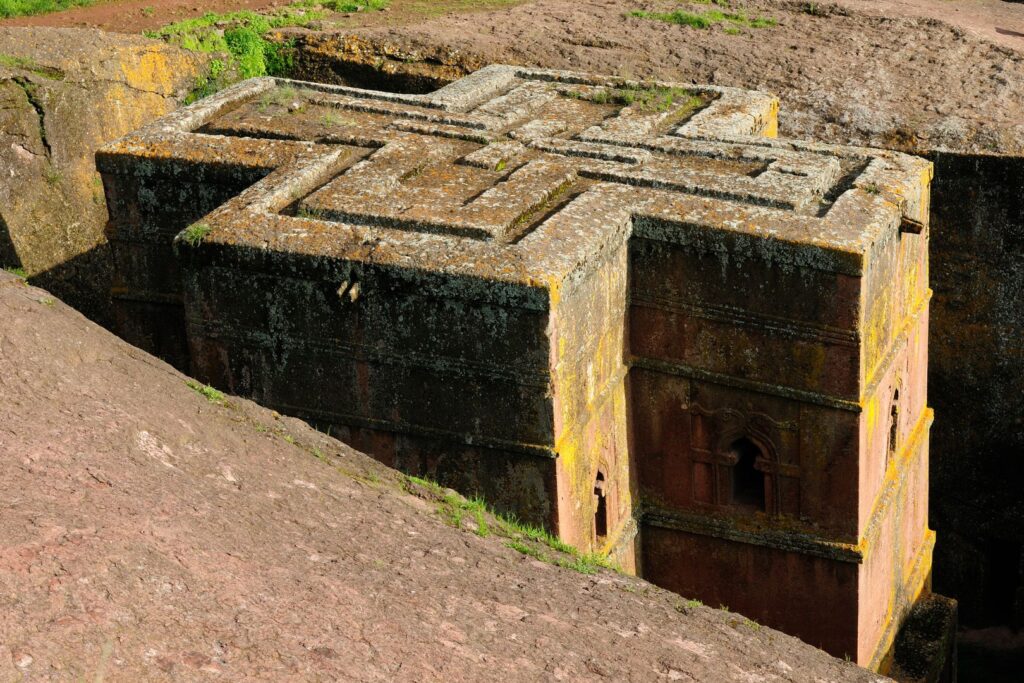
Lalibela, a UNESCO World Heritage site, is a town in northern Ethiopia. As a historical landmark, it is a testament to the enduring legacy of antiquity, medieval, and post-medieval civilizations. This ancient city is situated at the foot of Mount Entoto.
The city ascends from its lowest point in the Southern Ocean and boasts a vast collection of 11 monolithic rock-cut churches that were built during the reign of King Lalibela in the 12th and 13th centuries. For Christians, Lalibela is one of the holiest sites and visitors come from all over the world to marvel at its architectural wonders.
Some of the most famous churches include the Church of St. George, the Church of the Holy Cross, and the Church of Emanuel. The churches are an outstanding example of Ethiopian monolithic architecture.
Axum
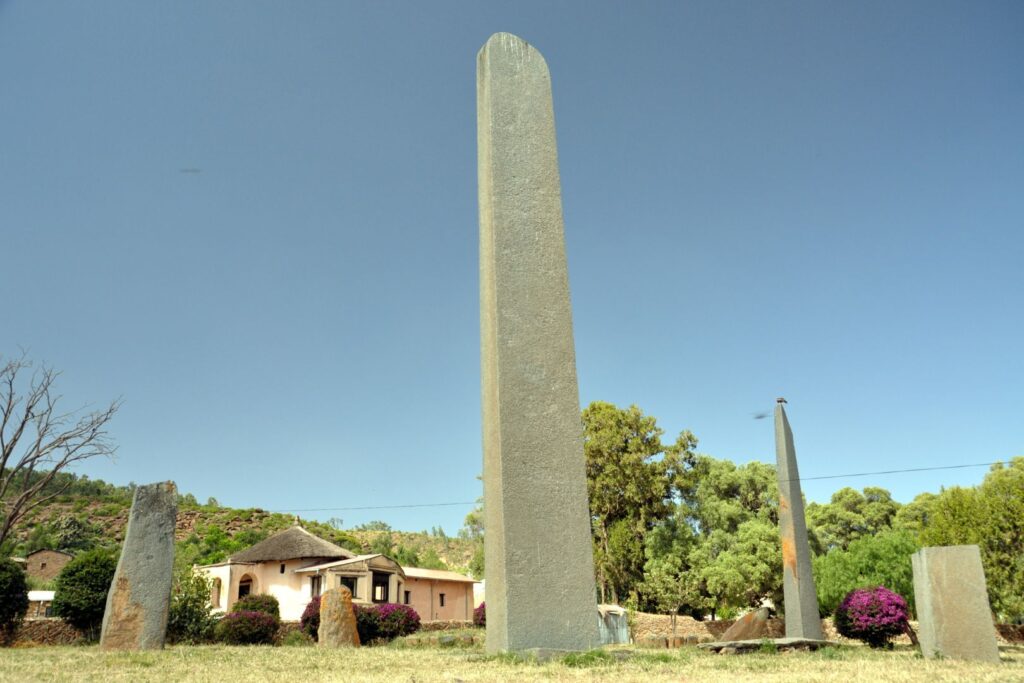
Axum, also known as Aksum, located in the highlands of northern Ethiopia was the capital of the ancient kingdom of Aksum, a prominent empire of the ancient world during the first century C.E. Situated at the crossroads of Africa, Arabia, and the Greco-Roman World, the kingdom held a pivotal position and was the most dominant state between the Eastern Roman Empire and Persia. Its strategic location facilitated extensive trade and cultural exchanges, contributing to its remarkable wealth and influence.
The town sits at an elevation of about 7,000 feet and is home to many cultural landmarks, including Lalibela Rock Churches and Harar Jugol. Visitors are especially drawn to the Obelisks or “stelae”, standing tall at 33 meters in the ancient city, which are believed to have been used for astronomical observations by the Aksumite civilization.
As the home of the Queen of Sheba and the Ark of the Covenant, Axum is one of the oldest continuously inhabited places in Africa, and its rich history offers visitors a glimpse into the ancient African civilizations that once thrived in the region.
Gondar
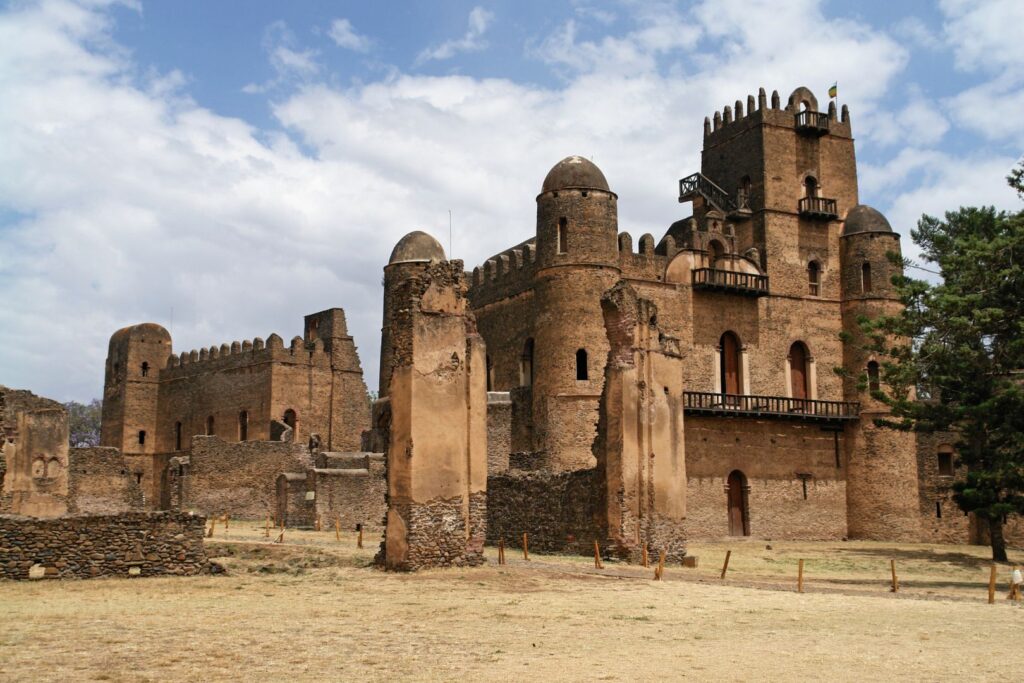
Gondar, a city located in the north of Ethiopia, is truly a historical landmark that captures the attention of visitors from all over the world. Known as the Camelot of Africa, Gondar was once home to the emperors and princesses who ruled Ethiopia from the 12th century until the late 19th century.
The city boasts an impressive collection of historical sites, including the remains of royal castles and palaces constructed by a series of emperors, such as Fasil Ghebbi, a royal compound that includes several buildings and castles constructed by Emperor Fasilidas in the 17th century.
Another notable site, Debre Berhan Selassie Church stands out as a true masterpiece of architecture and art, renowned for its stunning ceiling paintings depicting biblical scenes. Gondar, as the former Ethiopian Empire capital from 1632-1855, provides unique insights into the country’s rich history and culture.
Harar Jugol
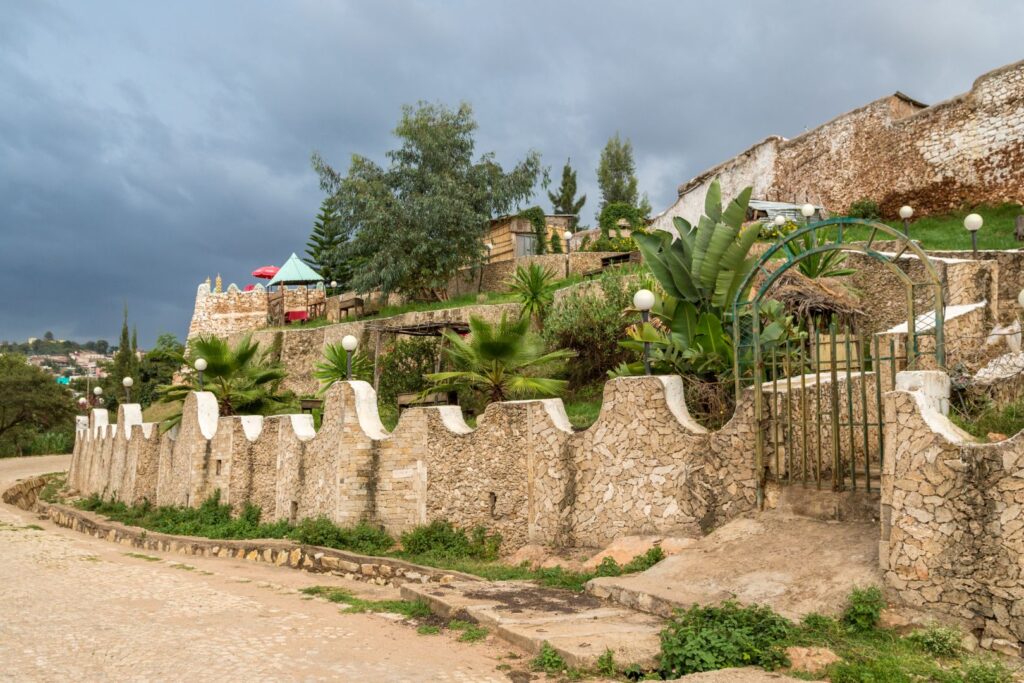
Harar Jugol, a historic walled city located in Ethiopia, is an exceptional example of traditional human settlements. This site is highly valuable as it showcases a significant Islamic culture that has long been a part of Ethiopian history.
Home to 82 mosques and 102 shrines, some of which date back to the 10th century, the city is a testament to the influence of religion on Ethiopian society. In 2006, the city was listed as a UNESCO World Heritage Site, recognizing its cultural heritage and contribution to world history.
The Harar Jugol Wall that surrounds the city offers a glimpse into its long history as the capital of the Harari Kingdom from 1520 to 1568. The city’s significant contribution to Ethiopian history and culture is a must-see for travel enthusiasts and history buffs alike.
Yeha Temple
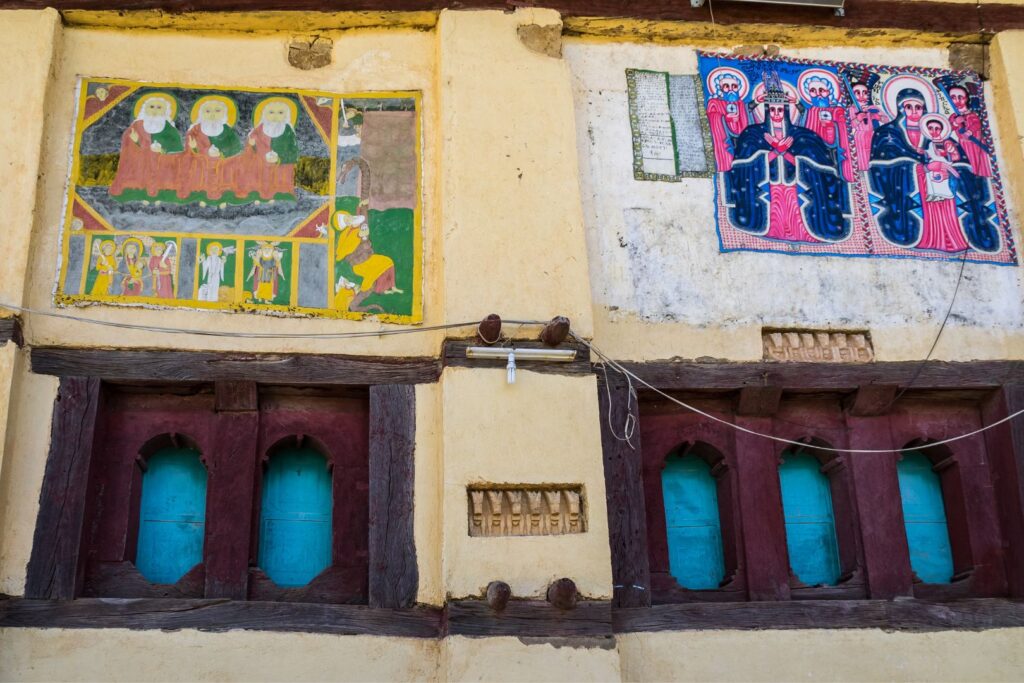
The Yeha Temple is a remarkable historical landmark in Ethiopia that has stood the test of time as the oldest standing building in the country. it is a remarkable testament to the enduring legacy of Ethiopia’s rich cultural heritage.
Located in the village of Yeha in the region of Tigray, the Great Temple of Yeha boasts impressive limestone structures that conceals over two millennia of history. The Yeha Temple was constructed in the Sabean style to pay homage to the moon god Almougah, a religious practice that was prevalent in sub-Saharan Africa.
According to archaeologists, the temple underwent a transformation during the 6th century AD, when it was converted into a monastery. This theory could account for the temple’s remarkable state of preservation, as Christianity gained ground in the area.
Tiya Stones
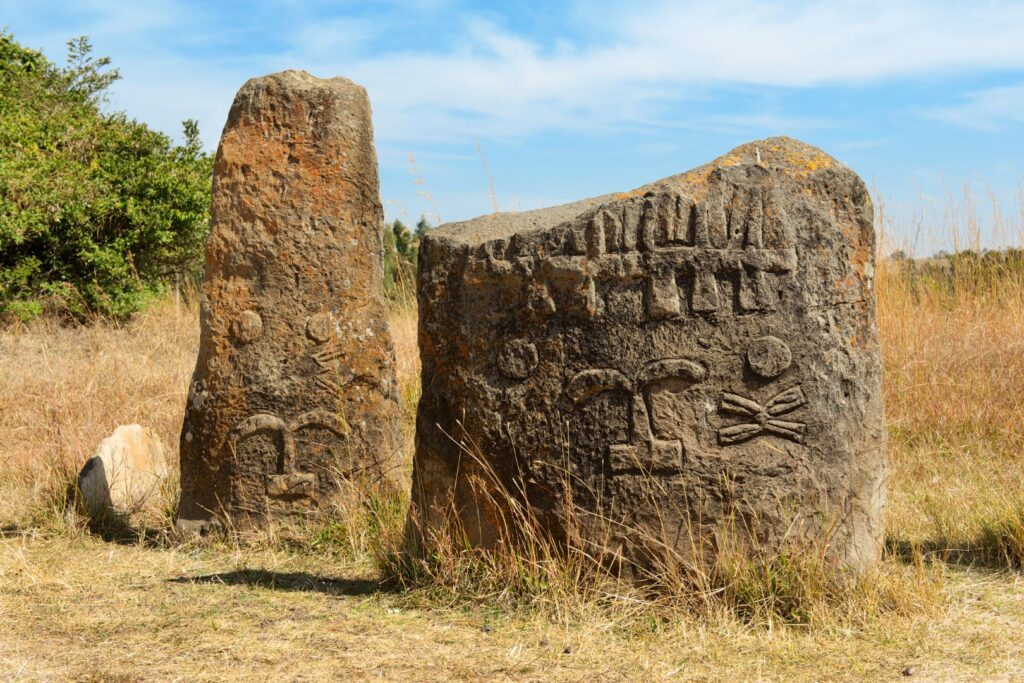
The Tiya stones are a fascinating archaeological site located in central Ethiopia. This historical World Heritage Site consists of 36 decorated standing stones or stelae, marking it a large prehistoric burial complex of an ancient Ethiopian culture.
These stelae are believed to have been erected between the 10th and 15th centuries and are engraved with mysterious symbols, the meaning of which are unknown. Despite this, these beautifully carved gravestones are approximately 50 miles away from Addis Ababa, making it the nearest UNESCO World Heritage Site to the capital.
Debre Damo
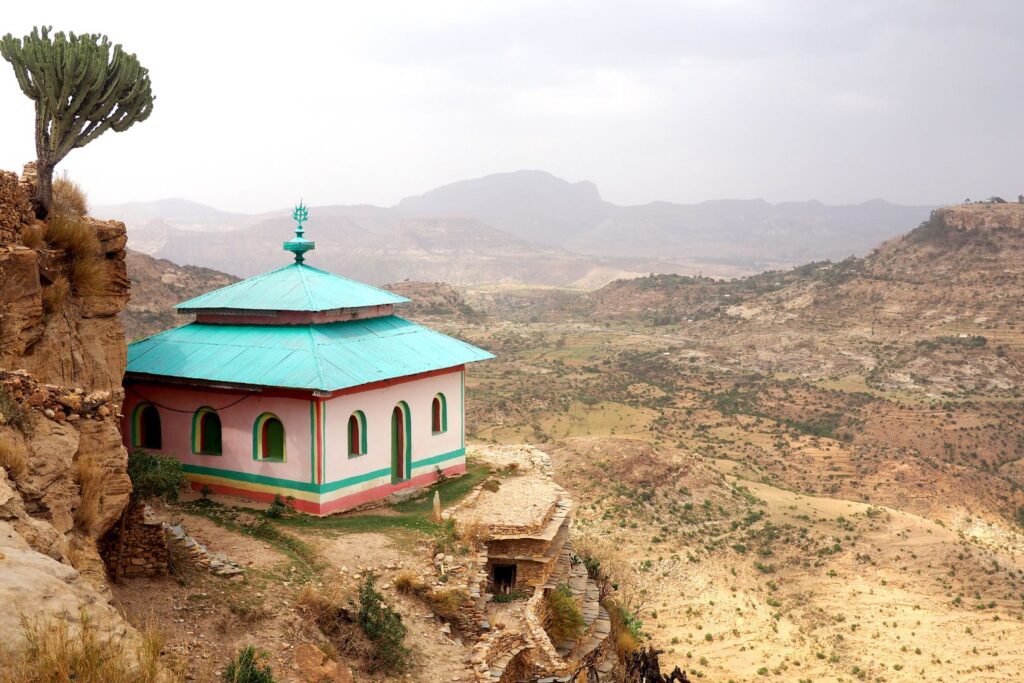
Debre Damo holds a special place in Ethiopia’s rich history as one of the country’s most important landmarks. This ancient monastery, located in the northern Tigray region, is said to be the oldest existing church in Ethiopia.
Its history revolves around the “Nine Saints,” who arrived from Syria and spread Christianity in the region. Built in the 6th century, Debre Damo is unique among Ethiopian monasteries because it is situated on an isolated mountain, accessible only by climbing up an animal leather rope lowered from the cliffs. Its remote location made it a place of refuge and great development for the Church and the region.
The monastery was explored by E. Litton, a German archaeologist, and his team in the early 20th century. Women are not allowed to step foot in the church as they must remain under the cliffs to pray.
Yemrehanna Kristos
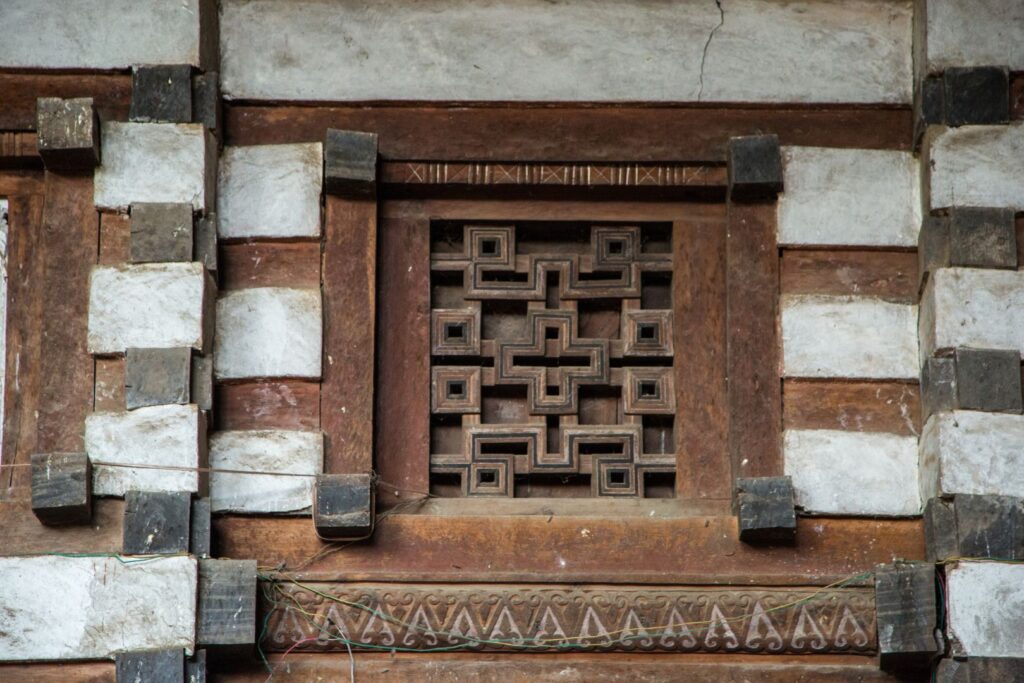
Yemrehanna Kristos is a remarkable historical landmark nestled in the Amhara Region of Ethiopia. This magnificent church, built inside a cave, is one of the best-preserved Axumite churches in the country. It boasts an impressive architecture, making it one of the most elaborate churches of its kind in Ethiopia.
The church is named after Emperor Yemrehana Kristos, who ruled during the second half of the Zagwe dynasty. It is located about 40 kilometers outside Lalibela and is one of the lesser-visited churches. Yemrehanna Kristos Church is not only steeped in historical significance, but it is also a testament to the ingenuity of the Axumite people. Its 3D model depicts the complexity of its construction, revealing why it is considered one of the most well-preserved examples of Aksumite Christian heritage.
Queen of Sheba’s Palace
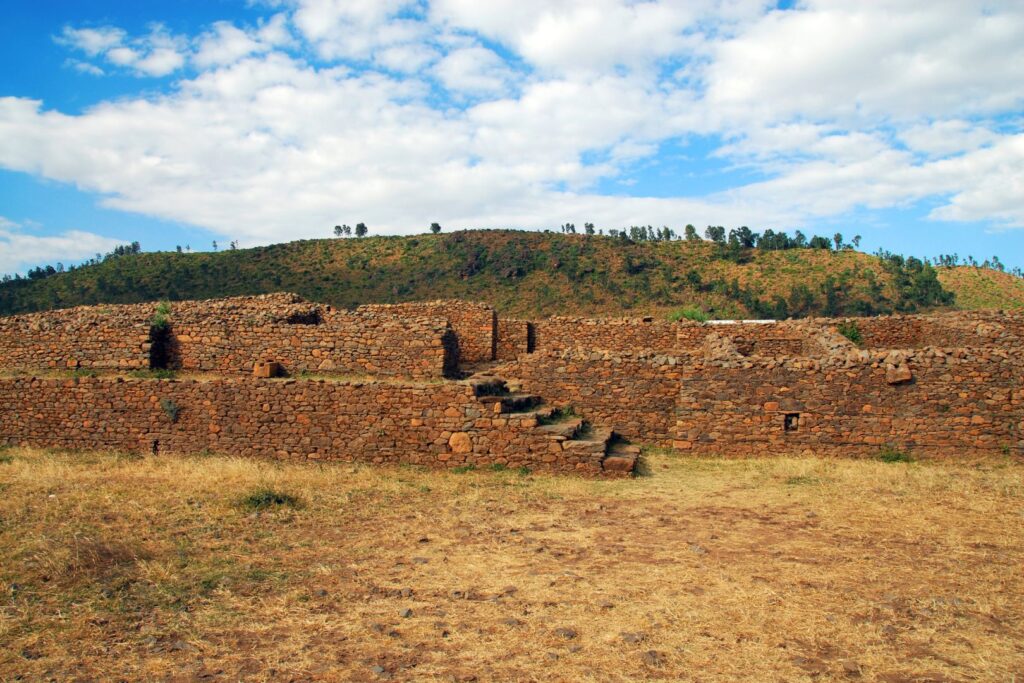
Nestled within the ancient city of Axum, the Queen of Sheba’s Palace stands tall as a testament to history and cultural significance. This archaeological site, believed by experts to be the home of the elusive Queen of Sheba, offers visitors a glimpse into the life and times of this legendary ruler.
The thick stone foundation walls of Dungur, famously known as the Queen of Sheba’s palace, provide an awe-inspiring sight that captivates visitors. The significance of Axum’s association with the Queen of Sheba is an important part of Ethiopian tradition and has allowed many Ethiopians to explore and connect with their history and cultural heritage.
Blue Nile Falls

When it comes to Ethiopia’s historical landmarks, the Blue Nile Falls is an honorable mention as a natural wonder. Located near the city of Bahir Dar, the Blue Nile Falls, also known as Tis Abay in Amharic, is a magnificent waterfall located on the Blue Nile River in Ethiopia. The falls are over 40 meters high and span up to 400 meters across during the rainy season, making for a spectacular sight.
Visitors can take a scenic hike to the waterfall and enjoy the breathtaking views from various vantage points. The Blue Nile Falls remains a symbol of Ethiopia’s natural beauty and its important role in sustaining the Nile river, which is crucial to the livelihoods of millions of people living in the Nile Basin.

“Take memories only, leave footprints behind.”
